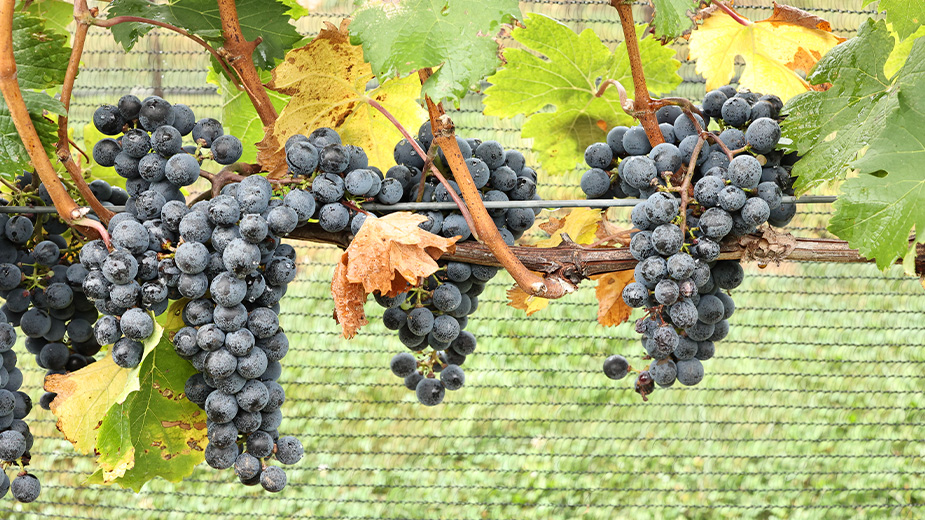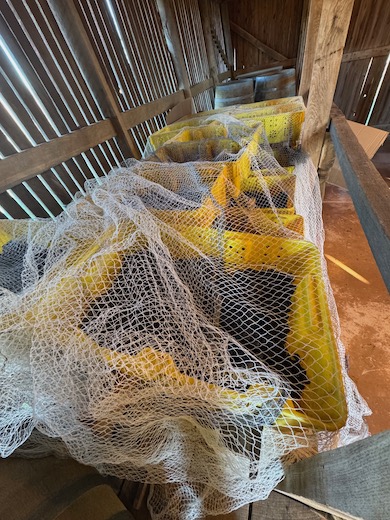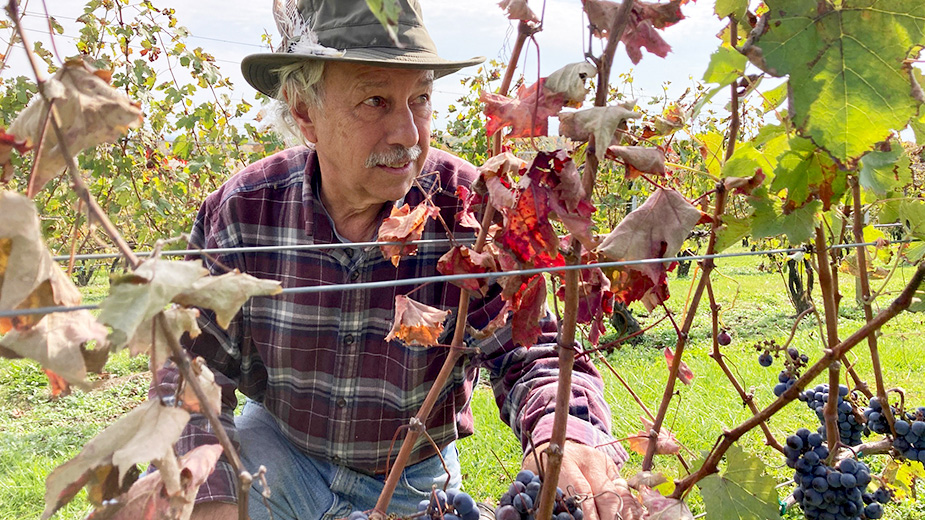Raise a Glass: It’s an Outstanding Year for Ohio Winegrowers
The drought that gripped the Buckeye State this summer may have diminished the corn and bean crops, but it was great for grapes.
In fact, winemakers throughout Ohio are rejoicing over the quality and quantity of this year’s harvest, which they’re calling the best in a decade.
Drought doesn’t stunt grapevines like it does vegetable crops. But most importantly, it delivered a warm and dry September and October – which is when grapes ripen. The result was grapes that are a bit smaller than usual but with above average sugar content, and very little lost to rot or unripened fruit. Because growers could hold off on picking until the fruit was at its peak, there was little waste.
The entire state had drought conditions except for the lakefront section of northeastern Ohio, which includes the Grand River Valley-Conneaut Creek viticultural area in Ashtabula County. But the region still had an outstanding harvest, because it was warm and dry when it mattered most.
“It was a very good year for grape quality all around,” says Maria Smith, viticulture specialist for The Ohio State University.
The smaller grapes concentrated the flavor. “When you press them, you get higher quality juice with a higher sugar concentration, and better color and tannins that give it flavor, aroma and mouth feel,” Smith says. “They’re saying the color of red grapes this year is the best ever, inky and dark.”
The warm and dry late summer and early fall meant growers were able to let cabernet sauvignon and cabernet franc grapes ripen for as long as necessary in Ashtabula County. Those grapes do best with a long, warm growing season, and that’s exactly what they got, according to Smith. “Pinot noir quality was also very high,” she adds.
Ashtabula County is home to 32 wineries and has more than 900 acres in grapes.
Not only did Ashtabula have a normal rainfall amount, the rain came at just the right time. “[Grape growing] is a function of when it’s wet and dry,” Smith says, explaining the lakefront region was dry throughout July and early August. After some rain in late August, dry conditions returned.
The lake effect can produce rain in the Grand River Valley, while areas just an hour south, such as the Mahoning Valley, remain dry, Smith points out.
Kosicek Winery
Tony Kosicek, owner of Kosicek Winery in the Grand River Valley, says this year’s harvest is his best since 2012.
“Mother Nature was good to us this year,” he says.
Red grapes, especially, showed a big improvement over last year’s harvest at Kosicek’s winery because of an early bud break in the spring, followed by a warm summer with plenty of rain and a dry September and October.
The reds that Kosicek grows are cabernet sauvignon, merlot, pinot noir and concord; his whites are chardonnay, riesling and vidal.

The volume of grapes he harvested was also above average.
“It was nice to fill all of our tanks to the top,” Kosicek says. “If something happens next year, we won’t have to worry about running out of wine. We will have good quality wine for years to come from this vintage.”
He has already begun the winemaking process. “Some of it will be ready to drink in the spring, but the cabernet sauvignon will take a couple of years,” he says.
Some wine can last longer once it’s bottled, he points out. “The whites, if you take care of them, are good for three to five years in the bottle, and the reds for seven to nine years,” he says. “And the reds age better, so they’ll get better in the bottle.”
Kosicek left some grapes on the vine to pick later for ice wine. Those grapes will be picked when the temperature is at 17 degrees or lower.
Farther South
Laleure Vineyards near West Farmington is south of the Grand River Valley, but it enjoyed similar weather.
The quality of its fruit this year is “absolutely incredible,” says owner-grower Rich Hill.
“It was a wet, early spring, and then it got dry,” he says. “Grape vines have deep roots, and we have a clay soil, so rain is not very important.”
The dry September made for a great harvest season in Laleure’s vineyard. It allowed Hill to try an old-world winemaking process for the first time.
“I’m doing something new that the climate is letting me do – making our cabernet franc appassimento,” he says.

Appassimento – the Italian word for withering – is a process in which the grapes are dried before pressing. Normally, grapes are pressed while fresh.
“You pick the grapes and then let them dry,” Hill explains.
The wine produced using the technique is more full-bodied and fruit-forward.
Hill’s vineyard is on the site of a former farm. It has a corn crib that he turned into a wedding chapel, but he’s now using it to dry grapes.
“It has slatted sides because it was made to dry corn,” Hill says. “I thought, ‘Why can’t we use it to dry grapes?’ I put a thousand pounds in, and they’re shriveling now. It’s like having a late harvest. It concentrates the flavor and the color and gives it a little higher alcohol because the water [percentage] goes down.”
Hill is also excited about his vignole grapes.
“We’re making an elite harvest out of our vignoles,” he says.
He was able to hold off on picking the fruit until the sugar content reached 31 brix. Normally, vignole are picked at about 22 brix. Brix are a unit used in measuring sugar content.
“Boy is it delicious,” Hill says. “The bees were attacking it.”
Invasive Insect
While vintners in northeastern Ohio are ecstatic over this year’s crop, they are keeping a wary eye on a problem that is getting closer.
The spotted lanternfly, an invasive insect that is particularly destructive to grapevines, entered the state last year.
It has not caused any damage yet, but the threat is growing, says Smith, the Ohio State University viticultural expert.
“The lanternfly is not in any vineyard outside of Cuyahoga County,” she says, “but it’s expanding westward into Lorain and Erie counties, and vineyards there are starting to see them. It will probably be another two or three years before they reach the Grand River Valley.”
Lanternflies have a foothold in the Mahoning Valley, Smith says, “but for whatever reason, they haven’t migrated north.”
Pictured at top: Rich Hill, owner and operator of Laleure Vineyards near West Farmington.
Copyright 2024 The Business Journal, Youngstown, Ohio.



